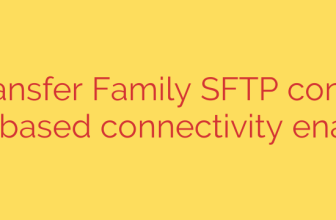
Massive Botnet Targets RDP: How to Protect Your Windows Servers
A new and highly sophisticated threat is actively targeting Windows systems across the globe, leveraging a massive network of infected computers to break into servers through the Remote Desktop Protocol (RDP). This widespread campaign highlights the critical need for robust security measures for any organization using remote access tools.
Security analysts have uncovered a sprawling botnet—a network of over 100,000 compromised machines—dedicated to a single purpose: executing large-scale brute-force attacks against open RDP ports. The sheer scale of this operation is staggering, with automated scans identifying more than 1.5 million vulnerable RDP servers exposed directly to the internet, all of which are potential targets.
A Deceptively Clever Attack Method
What makes this particular threat so dangerous is its methodical and stealthy approach. Unlike traditional brute-force attacks where a single attacker tries thousands of passwords against one target, this botnet uses a distributed strategy to avoid detection.
Here’s how it works:
- Scanning: The botnet continuously scans the internet for systems with an open RDP port (typically TCP 3389).
- Reporting: Discovered IP addresses of potential targets are sent to a central command-and-control server.
- Distributed Attack: The central server assigns a single username and password combination to each bot in the network. Each bot then attempts to log in to a specified target using only that one credential pair.
This technique is incredibly effective because each infected machine attempts only a single password guess against a target. This allows the botnet as a whole to try millions of combinations without triggering security alarms that typically block an IP address after a few failed login attempts. It is a slow, methodical, and highly evasive strategy designed to bypass common security defenses.
Once a machine is successfully compromised, it is reported back to the command server and can be used to expand the botnet, steal data, deploy ransomware, or be sold to other cybercriminals on the dark web.
Why RDP Remains a Prime Target
Remote Desktop Protocol is a powerful tool for administrators, allowing them to manage servers and workstations from anywhere. However, its power and ubiquity also make it a high-value target for attackers. Gaining RDP access is equivalent to sitting in front of the machine, giving an intruder complete control over the system and potentially the entire network.
This level of access allows criminals to:
- Install and execute ransomware.
- Exfiltrate sensitive corporate or personal data.
- Use the compromised server as a pivot point to attack other systems on the network.
- Sell access to the highest bidder on underground forums.
Actionable Steps to Secure Your RDP Connections
Protecting your systems from this type of attack is not optional—it’s essential. Relying on a strong password alone is no longer sufficient. If you use RDP, you must implement a multi-layered defense strategy.
Here are the most effective steps you can take today to secure your servers:
1. Never Expose RDP Directly to the Internet: This is the single most important step. There is rarely a valid reason to have RDP open to the world. If you require remote access, place it behind a firewall and use a more secure method to connect.
2. Use a Virtual Private Network (VPN): Require all users to connect to the corporate network through a VPN before they can access RDP. A VPN creates an encrypted, secure tunnel, effectively hiding your RDP ports from public-facing scans.
3. Implement Multi-Factor Authentication (MFA): MFA adds a critical layer of security by requiring a second form of verification (like a code from a mobile app) in addition to a password. This single measure can stop the vast majority of brute-force attacks, even if the attacker has the correct password.
4. Enforce Strong, Unique Passwords: Ensure all accounts, especially administrative ones, use long, complex, and unique passwords. Discourage password reuse across different services.
5. Enable Network Level Authentication (NLA): NLA is a feature in modern versions of RDP that requires a user to authenticate before a full RDP session is established. This provides an earlier layer of defense and consumes fewer resources when under attack.
6. Configure Account Lockout Policies: Set a policy that automatically locks an account after a specific number of failed login attempts. While this specific botnet is designed to evade IP-based lockouts, account-based lockouts are still a crucial defense against less sophisticated attacks.
The rise of this massive, stealthy botnet is a stark reminder that cybercriminals are constantly evolving their tactics. By taking proactive and decisive security measures, you can ensure your remote access protocols are a tool for productivity, not a gateway for attackers.
Source: https://securityaffairs.com/183389/security/researchers-warn-of-widespread-rdp-attacks-by-100k-node-botnet.html








